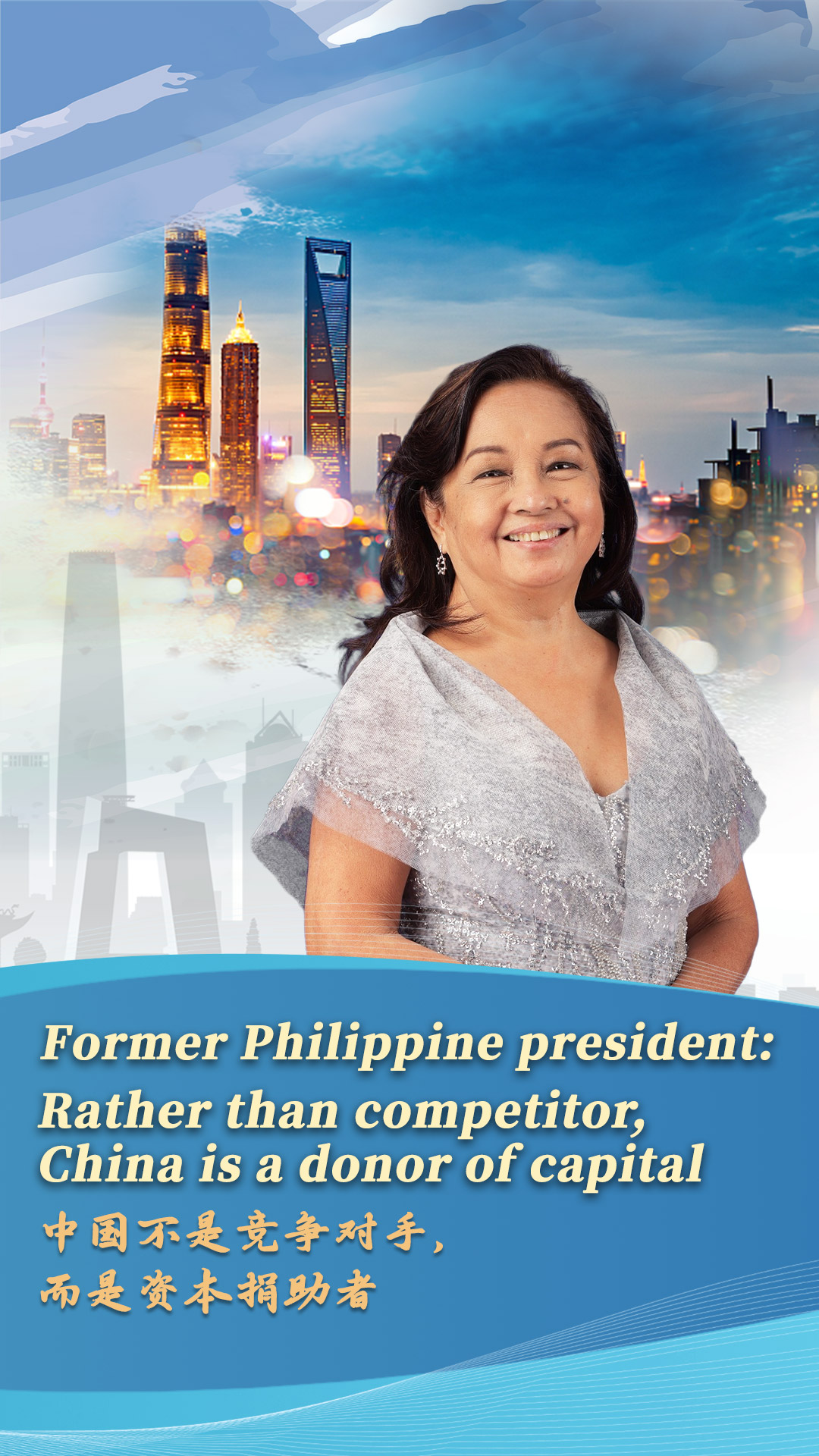Editor's note: China's annual Central Economic Work Conference kicked off on December 11. To review the country's basic policies of opening up and attracting foreign investment, Gloria Macapagal Arroyo, former President of the Philippines, shared her insights in this video, where she also talked about the impact of China's growth on neighboring countries. The views expressed in the video are Arroyo's own and not necessarily those of CGTN. The China Institute for Innovation and Development Strategy also contributed to the production of this video story.
I am privileged to have been able to observe China's growth from before its 1978 reforms until today. I first visited China with a Philippines-China friendship group in 1977, and then with my father, the late President Diosdado Macapagal in December 1978, just before China embarked on its reform and opening. Between those two first trips of mine to China, at the National Conference on Science, Deng Xiaoping declared that the key to the four modernizations is the modernization of science and technology.
If I were to characterize what happened in China from that time up to today, there is one word to describe it: breathtaking. I recall that in the 1980s, the term "dragon economy" was coined to describe the economic miracles starting to take shape in China. I was then an official in my country's Department of Trade and Industry. I was wondering then if China would become our chief competitor in the world. Little did I realize then that China was in a class of its own.
Rather than a competitor, China has proven to be a partner in development; it is a market for developing countries, a donor, and a provider of capital and technology. If I were to summarize the keys to China's success during the last 40 plus years since 1978, I would point to four factors. First, a long-term vision. Second, a strong will to implement that vision. Third, a recognition of the value of infrastructure. And fourth, a recognition of the value of state-of-the-art technology.
At the 20th Party Congress, Chinese President Xi Jinping highlighted, among China's overall development objectives for the year 2035, to significantly increase scientific and technological capabilities; join the ranks of the world's most innovative countries, with great self-reliance and strength in science and technology; and become a leading country in science and technology. Thus, China is setting a new growth model in the increasing complexity and acceleration of change in the entire world system.
The world is indeed in a new era, and this new era calls for a new journey and new cooperation. In this new cooperation, the relationship between the Philippines and China is more important than ever for my country.
Let me end by quoting Chinese President Xi Jinping's message to the Asia-Pacific Economic Cooperation (APEC) CEO summit: "We need to embrace the new round of scientific and technological revolution and industrial transformation; accelerate scientific, technological and institutional innovation; foster new economy, new types of business and new business models; and achieve digital transformation."
(If you want to contribute and have specific expertise, please contact us at opinions@cgtn.com. Follow @thouse_opinions on Twitter to discover the latest commentaries in the CGTN Opinion Section.)


